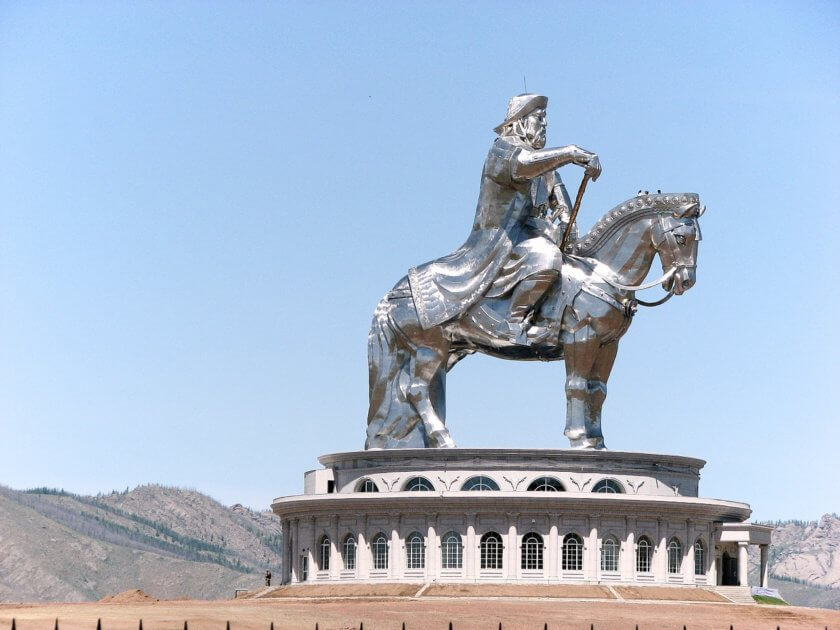Mongolia is known for its yurts and its nomad lifestyle but there’s much more to it than valleys of gorgeous green and galloping horses. In the summer of 2019, I spent some time riding through the country and chatting with my Mongolian guide and other travellers, I discovered what other landscapes and experiences this primarily Buddhist nation has to offer.
When I met with my guide Muggie, she had just returned from a two-week hiking trip on glaciers. The image of snow and icy Mongolian mountains didn’t match the picture I had formed in my head about this place but once again, the world is full of surprises.
A varied landscape

Not only does Mongolia have glaciers but it has canyons and desserts too. In fact, Gobi dessert is a fantastic place to explore. Just think of riding camels and sliding down sand dunes. As green as the country’s mountains are, Gobi dessert prides itself in dark yellow and orange shades. Along the way, you might find dinosaur fossils too and the odd nomad community to offer you the milky tea that’s a huge part of Mongolia’s everyday life.
A tour to stay with the nomads
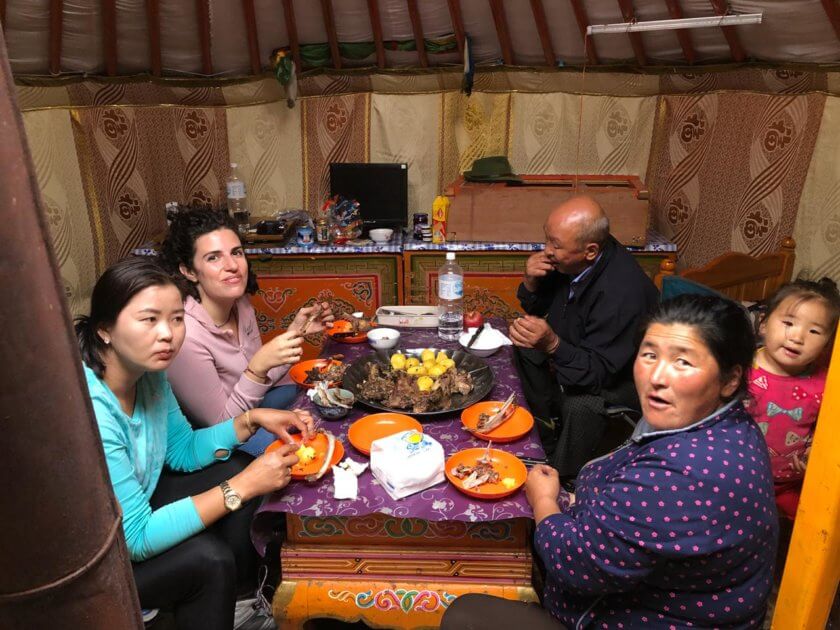
Photo by Eleni Philippou
It would be almost unheard of to visit the country and not stay with a nomad family. It’s a unique, unforgettable experience to see how and why these people choose to live the way they do; in a circular ger (aka yurts) in the middle of nowhere with little besides their animals and nature. But you can’t just stay with any nomad family. To live the ger experience, you have to book a tour, you can’t just show up at a nomad house and ask them to host you. It has to be done through a tour company as it’s a selection of nomads that offer up their ger to visitors. You pay the company and they share the money with the nomads. And don’t worry, there’s plenty of nomads that do so, finding one shouldn’t be an issue.
The ger structure
Once at the ger, you’ll discover lots of fascinating facts about life there, the ger’s construction and how it works. When I stayed there, I discovered that the reason ger are circular and have no corners is so that no energy is trapped. A round structure means that energy doesn’t get stuck anywhere and simply flows. You’ll also notice that the nomads have limited belongings so they’ve figured out an alternative way to do normal things. The doors of ger for example always face the south so you can immediately localize yourself, no need for a compass or a clock for that matter. The ceiling of a ger is round and see-through often with some wooden beams. The nomads use it to figure out the time of day, according to the position of the sun.
The ger life
All of the nomads I met at the ger seemed to be always active, while I was busy staring at the endless stretch of green. The adults may spend most of their time working around their ger and farm though the children go to normal school in the nearest city. That may be an hour and a half away at least so it is normal that they stay at the boarding school throughout the week and return home on the weekends.
“How do they get on with the other kids at school?” I asked my guide thinking of how easy it would be to merge children with different lifestyles. “Oh, just fine” Muggie replied. “It’s normal for them.”

Photo by Eleni Philippou
Meat prevails
With so many farmers and herders, it’s no surprise that meat is a primary part of Mongolian cuisine. Lamb was the king at my ger. The local diet is based on meat, dairy and flour. Noodles, dumplings, rice dishes, cheese, yoghurt and slow-cooked meat are but a few of the daily meals. Meat consumption is so high that it affects the locals’ skin. My guide explained that because they eat so much meat, dark spots are created, mostly on the cheeks, giving them those rosy cheeks Mongolians are known for. Of course, this isn’t the only reason their cheeks are darker but it is an influencing factor.
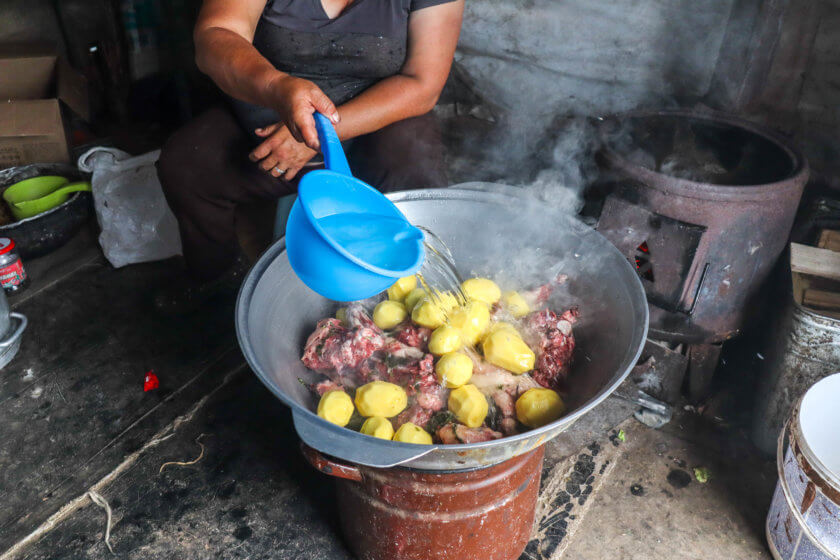
Photo by Eleni Philippou
Vegetables and fruit are scarce due to Mongolia’s harsh weather conditions which make agriculture difficult. In Ulaan Baator however, you’ll find plenty of those at supermarkets and restaurants, mostly imported from China. Berries are local and popular and if you get a chance to try a berry jam, do so!
A meaning behind the name
I love finding out the meaning some words have and on one of our usual long drives, I asked my guide if the word ‘Mongolia’ meant something. “Sky”, Muggie replied, “and Ulaan Baator, the capital, means Red Hero”. Cool right?
Ulaan Baator has a lot of traffic
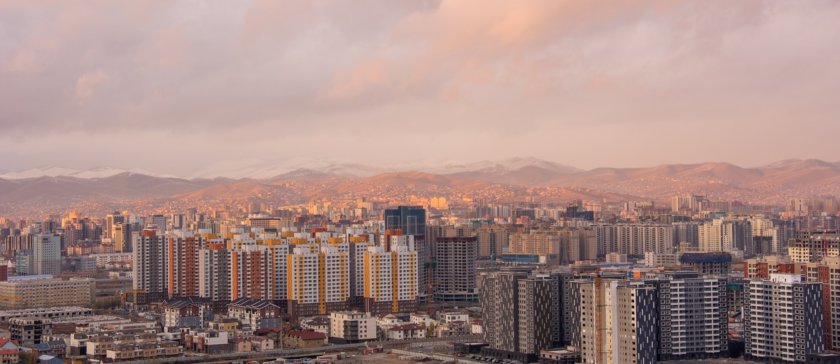
It just does. Be patient. Upon our return from our nomadic stay back to UB, as the locals call the capital city, we hit a good day traffic-wise. That said, it was still a 30 to 40-minute wait in a what I’d call a traffic jam. Muggie and the driver were pleased nonetheless that it wasn’t too bad, so if you are not used to being the car for long, practice patience and acceptance before hitting the road in Mongolia.
Low life expectancy
The average life expectancy in Mongolia is between 65 and 69 years old. The reasons are plenty and could do for a separate article but many believe that it is due to pollution and restricted access to healthcare as those that practice the nomadic lifestyle (which is around 30-40% of the population) don’t have quick admission.
It’s rich in cashmere
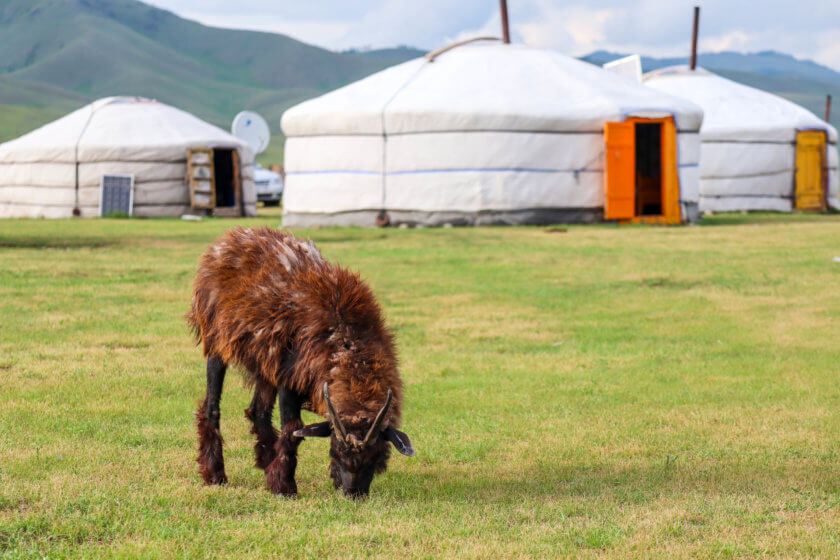
Photo by Eleni Philippou
Mongolian cashmere is amongst the best in the world and it is made from goats. Four goats will make about one sweater and the work needs to be so careful that the result is quite pricy. Beige-coloured cashmere is usually the most expensive. It will be cheaper in Mongolia than anywhere in the West and it will be even cheaper if you buy it outside the main cities. Keep in mind though that black markets exist everywhere and you should always ask a local for their advice.
The legend that is Genghis Khan
If you don’t know this name, you should. Don’t worry I didn’t know much about him either but I discovered that he was quite the man. Genghis Khan was as the founder and first Great Khan of the Mongol Empire, which became the largest contiguous empire in history after his death. He took over large areas of modern-day China, Korea, the Caucasus, Central Asia, and substantial portions of Eastern Europe and Southwest Asia.
Mongolia has the largest equestrian statue in the world and it is of Genghis Khan. It’s located on the bank of Tuul River, 45km from Ulaan Baator and is impressively 40 metres tall. The statue sits on top of the Genghis Khan Statue Complex, a visitor centre with a museum, restaurants and shops. If you take the lift up to the horse’s neck you’ll be greeted with a captivating panoramic view.
Time to explore Mongolia?
